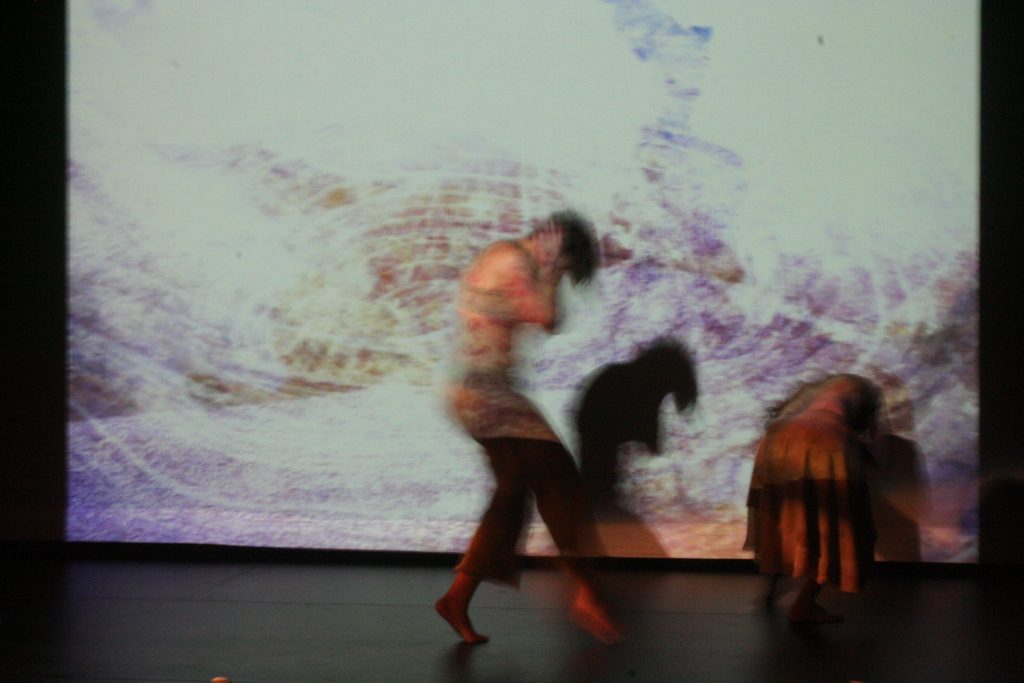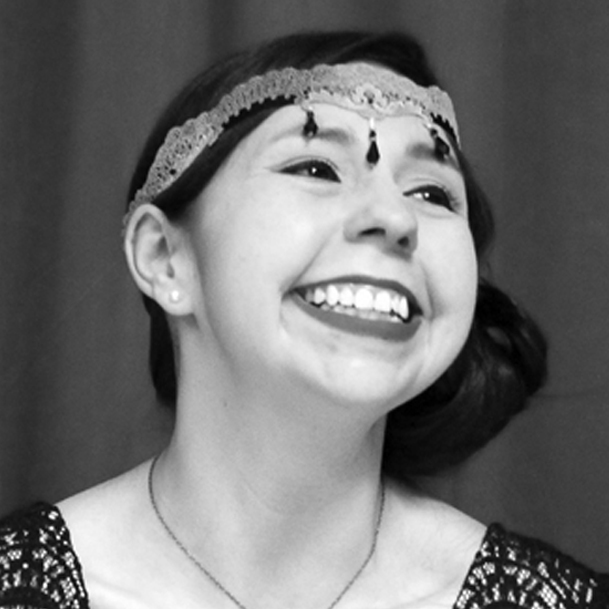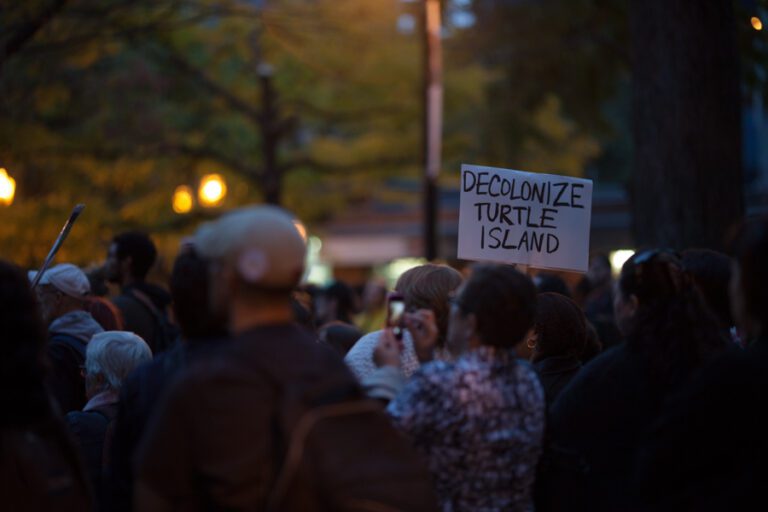Ready to Emerge: Thoughts from a Not-Yet-Established Artist
Oh hi. I didn’t see you there. It’s just me, Frances Koncan, Anishinaabe writer, occasional director, and infrequent, unwilling actor from Couchiching First Nation. I am also, according to all the arts grant applications that specify that you must have at least one hundred professional productions and own a unicorn in order to be considered an established artist, an emerging creator.
Yes, that is I, that is me: a deceptively youthful emerging creator, only recently birthed from the foam of Zeus, newly risen, ready to hit the scene and willing to be underpaid and underemployed in the hopes of future creative satisfaction in my career. When I chose to work in theatre, I chose it instead of law school, because at the time I had a lot more energy and everything seemed possible.
Now that my energy levels are depleted and I must stay young by absorbing the essence of younger people like a mysterious creature in a fairy tale, let me tell you the cold, hard truth: I am ready to EMERGE. I was born ready.
I am ready for other things too, namely intense social media backlash and some kind of scandal—all signs of a truly emerged artist, if the Jenner-Kardashian teachers of my formative years are to be believed. But until then, I’ll wait here in my little cocoon, tweeting into the void and waiting for a chance to complete my metamorphosis and turn into the Butterfly That Was Promised.
Until then, I’ll continue my emergence as a theatre creator at Weesageechak 30.
In celebration of its thirtieth year, Weesageechak is showcasing ten days of Indigenous theatre, presenting new work and works-in-development in dance, theatre, and interdisciplinary performance forms. “We’ll welcome back familiar faces, and introduce audiences to emerging creators just coming onto the scene,” quoth the website. And that, dear strangers of the internet, is where I come in. It’s my second time at Weesageechak, and I am hella excited. In a lot of ways, it feels like a second chance.

Frances Koncan’s play zahgidiwin/love at Weesageechak 29. Photo by akipari
My first time was last year, when I presented a reading of my play zahgidiwin/love. It was intimidating, scary, and I often felt like a stranger at a party I was accidentally invited to, as if someone had meant to invite their other friend Frances but it was too late to revoke the invite so they let me come anyway. I am hoping this second time around wasn’t a mistake, and that my 2017 brand will be a total 180 from last year’s.
Weesageechak 29 was truly a wild ride from start to finish for me. I arrived in Toronto from my hometown of Winnipeg with makeup I had decided to do on the plane, during that turbulent twenty minutes over Lake Superior. I don’t know why I chose that time specifically. Maybe I wanted a challenge. Maybe I was feeling lucky. Either way, it didn’t work out. My liquid eyeliner was very not okay and my highlighter game was at its lowest level since the last time the Cubs won the World Series.
After landing in Toronto, it was off to my hotel to steal small shampoo bottles and fix the disaster upon my face in time to meet with my dramaturg at the festival. We had plans to go for a drink before watching the performance that evening, which was a reading of a new play by Drew Hayden Taylor, my long-time crush and a true denim-on-denim-wearing hero.
I devised a vibe for the night (I believe it was something like grunge-era Isabella Rossellini) and hoofed it on over to a café to have a glass of red wine before the big night. Little did I know, when I walked into the bar, that Drew Hayden Taylor was already there, eating and drinking, surrounding by adoring fans.
When faced with this situation in the future, I will be cool. As a second-year festival veteran, I will breeze over and say something like, “Sup fam! My name is Frances, and I’m looking forward to hearing your work tonight. Cheers!” But, as a lowly first-year newbie, I instead scurried to the bar like a diseased rat, ordered my wine, and found a dark corner to sit in as I drank it, far away from all human life. It was the equivalent of eating lunch in the bathroom on your first day of high school.

Drew Hayden Taylor’s play Boneyard Blues at Weesageechak 29. Photo by Ed Maruyama
The reading was great. The audience was diverse. I’ve never in my entire life experienced an audience with more than five Indigenous people in it, and that was at a production of Mindy Kaling’s Matt & Ben that I produced and my entire family came to see because it was “a comedy” and “not like that political stuff [I] normally do.” At Weesageechak, jokes that would never work amongst a sea of Caucasians landed wonderfully. Criticism and commentary of Canada’s political landscape could just be a casual thing, acknowledged and identified without turning everything into a Very Serious Issue-Based Play. Basically, a variety of Indigenous characters and cultures were up on stage, each unique and different, without a one-dimensional stereotype to be found. It was fantastic.
I never did get up the courage to speak with Drew Hayden Taylor. This inferiority complex is something I imagine—and hope—many emerging artists feel when we encounter our role models and heroes. I spend a lot of time wondering if I’ll ever grow out of it, or if I’ll just get better at faking it, or if I’ll stay awkward forever. I hope it’s one of the former.
In the creation of this article, I reached out to Mr. Hayden Taylor, or D-Unit as his friends probably call him (but I can’t prove that for certain), for his thoughts about the festival and, more importantly, our future friendship. But, alas, he did not respond. This is probably because I realized while editing this article that I had sent the email to myself instead of him. I am already nailing Weesageechak 30 and it hasn’t even started yet!
As a naïve, young, youthful, wrinkle-free emerging creator, I only know of the festival’s history through the memories of others. Like all festivals, it seems to have had its ups and downs, its cohesion and its clashes of ideas and ideologies—after all, there is no one magical Indigenous Way of seeing the world, or moving forward, or making theatre. As an Indigenous playwright, Weesageechak was actually my first experience at a festival that did not centre around whiteness. As a Winnipeg-based playwright, I didn’t even know festivals like it existed. Only when I was selected to present at Weesageechak for the first time did it occur to me that I didn’t know much about Indigenous theatre at all.
Naturally, to learn more about it so I would arrive prepared and 100 percent knowledgeable about all things before the festival, I turned to Google. I’m a big fan of entering phrases I know will yield questionable results, and so I searched for “History of Canadian Indigenous Theatre” and also “Summary” because I have a thirst for knowledge but also value my time. Through this, I discovered that Indigenous theatre began in the 1970s and in 1990 became mainstream. That was really exciting to read as I wasn’t aware it was mainstream! In school, we were taught about Tomson Highway, Canadian’s lone Aboriginal playwright, and I got to see a production of his play Dry Lips Oughta Move to Kapuskasing, performed (with permission) by a primarily white cast.

Gloria Miguel’s Something Old, Something New, Something Borrowed, Something Blue at Weesageechak 27. Photo by Ed Maruyama
After experiencing and participating in Weesageechak for the first time, my knowledge and understanding of Indigenous theatre in Canada has been dramatically expanded and reshaped, and so has my own work as an artist. For most of my life, I had been shown that Indigenous theatre was theatre about serious Indigenous issues: poverty, residential schools, trauma, and maybe the pow-wow circuit if it was a comedy. My first year out of school, I was told by a white theatre artist that I was not an Indigenous writer because my plays did not directly address the severity of Indigenous problems and were from a middle-class perspective written for a middle-class audience.
Upon experiencing the work at Weesageechak, I began to understand that Indigenous art is anything—absolutely anything—created by an Indigenous person. If an Indigenous person writes a poem about their grandmother’s experience in residential school, that’s Indigenous art. If an Indigenous dancer creates a work about how much they love pumpkin spice lattes, that’s Indigenous art. There’s art about the Indigenous experience, and there’s art created from the Indigenous perspective. I had never realized that those were two different things. Now I know that art can be one or the other or both or neither, and I worry a lot less about how my own work is defined, knowing that my perspective and lived experience is fundamental and not something that can be taken away or redefined by other people.
Weesageechak opened up a whole new world for me as a theatre creator, and I hope it will continue to lead to new opportunities for me in the future. The festival is basically the same age as I am now, and no longer an emerging one but an established one. I hope that someday I too will become established like this festival, and like the many great artists who have cut their teeth here. I hope that someday I too will eat in a restaurant and have young artists stare at me from another table, wishing they had the courage to approach me. And I hope they’ll approach, because it’s likely I’ll be eating alone, trying to get up the courage to approach them too.










Comments